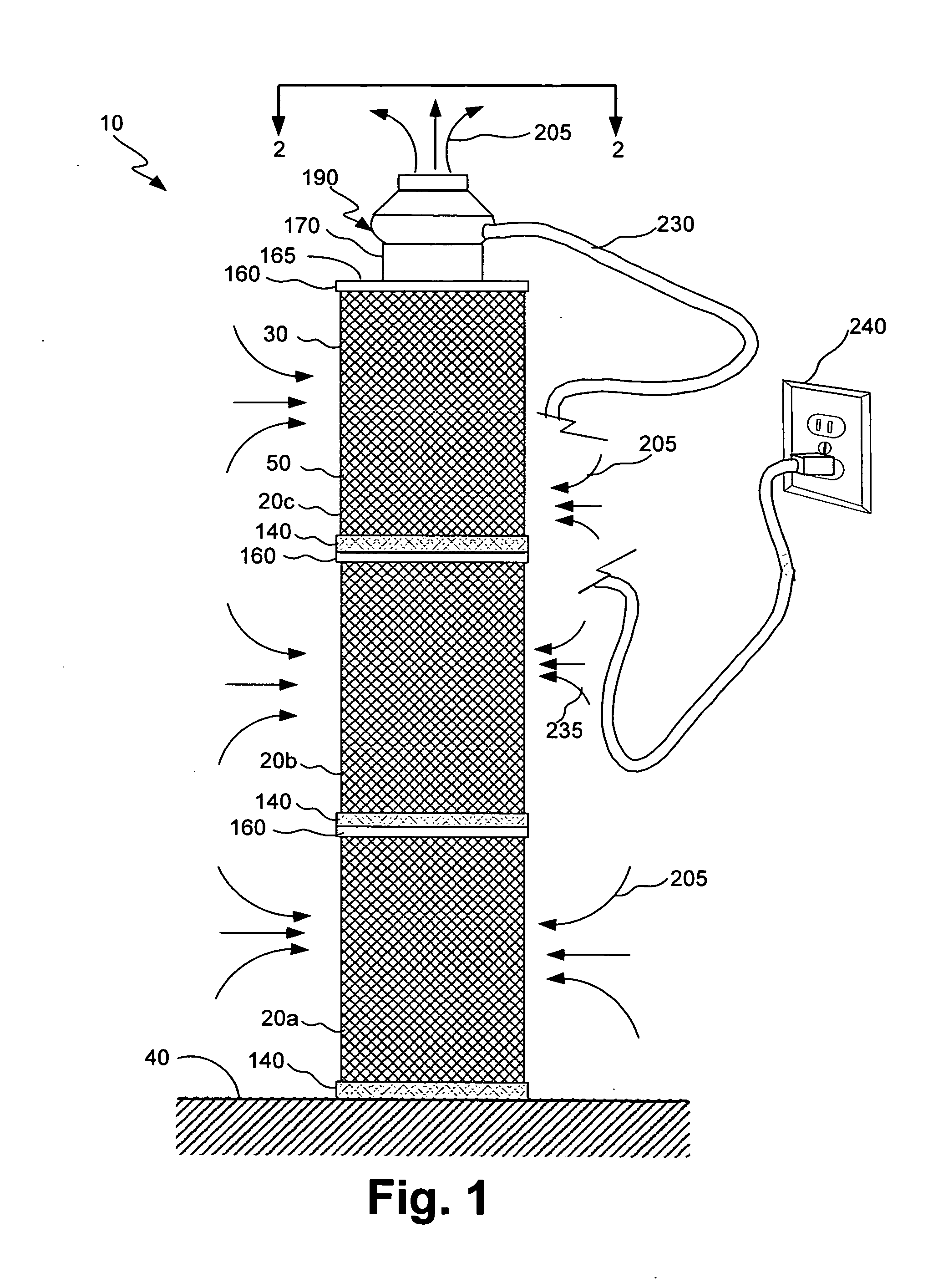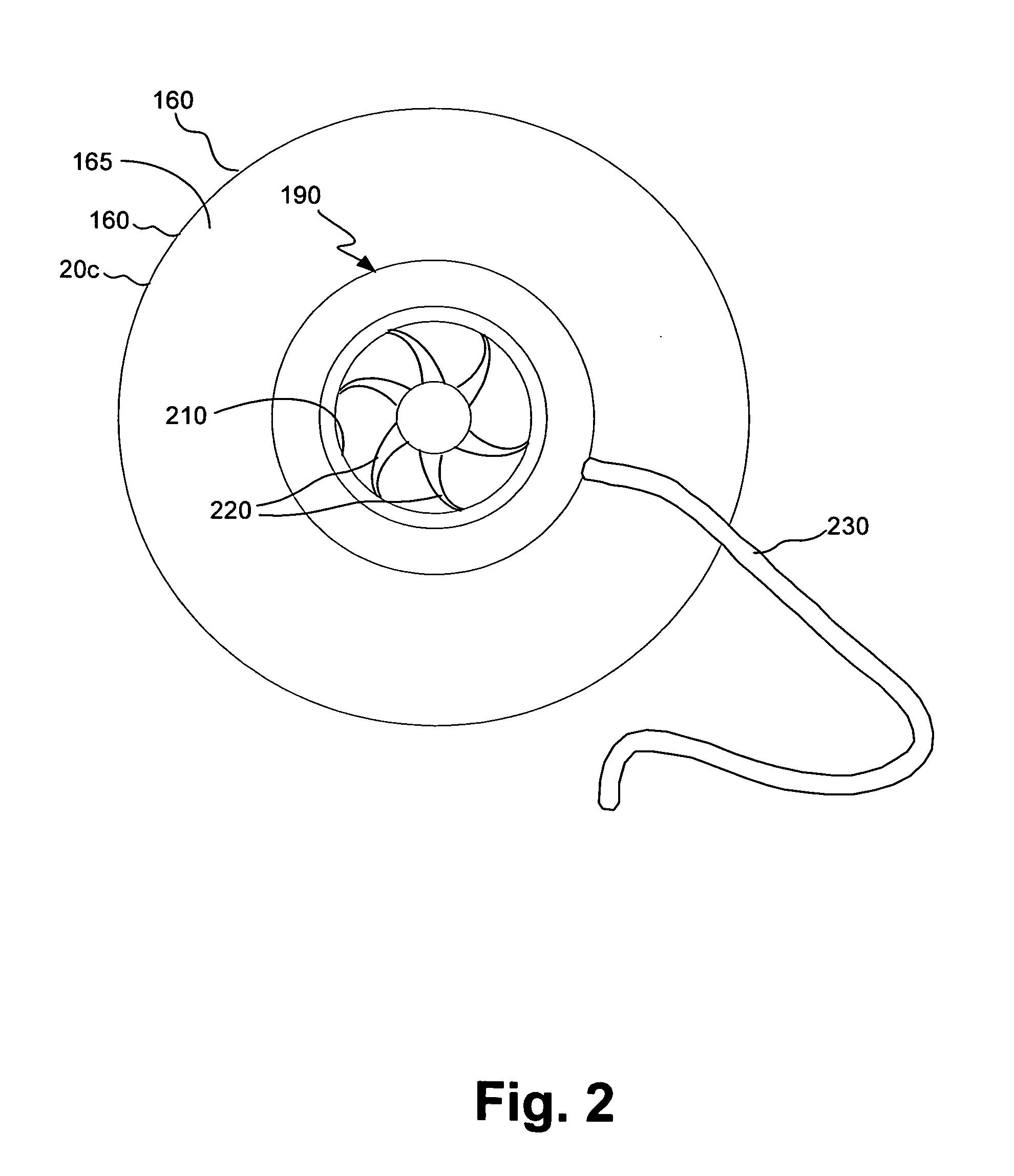Segmented stackable filter assembly for filtering a gas and method of manufacturing same
a technology of stackable filter assembly and gas filter, which is applied in the direction of liquid degasification, auxillary pretreatment, separation process, etc., can solve the problems of affecting the air quality of the air, affecting the quality of air quality, so as to reduce the cost of purchasing, and improve the effect of air quality
- Summary
- Abstract
- Description
- Claims
- Application Information
AI Technical Summary
Benefits of technology
Problems solved by technology
Method used
Image
Examples
first embodiment
[0082]Therefore, with reference to FIGS. 1, 2, 3, 4 and 5, there is shown a first embodiment segmented stackable filter assembly, generally referred to as 10 (hereinafter “stackable filter assembly 10”), for filtering a gas, such as indoor room air. The room air may contain pollutants harmful to human health and damaging to indoor plants. For example, the pollutants may include harmful gases, such as ozone (O3), nitrogen dioxide (NO2), carbon monoxide (CO), sulfur dioxide (SO2), naturally occurring radon, and environmental tobacco smoke (ETS). Indoor pollutants may also include volatile organic compounds (VOCs), such as formaldehyde, pesticides found in many household products, and airborne lead and mercury vapors from old paint. Other undesirable air-borne gaseous contaminants may be, for example, mold, mildew, pet odors, cooking odors, hydrocarbons and other malodorous and gaseous contaminants. It is desirable to remove these pollutants from indoor air in order to avoid risk to hu...
second embodiment
[0090]As best seen in FIG. 6, there is shown a second embodiment segmented stackable filter assembly, generally referred to as 250 (hereinafter “stackable filter assembly 250”), for filtering a gas, such as indoor room air. Stackable filter assembly 250 is provided with means for conveniently transporting column 30 thereof from one location to another location, such as from one room to another room of a business establishment, residence or any confined space needing air filtration. In this regard, stackable filter assembly 250 is substantially similar to stackable filter assembly 10, except a wheeled platform 260 is provided for moving column 30 of filter segments 20a, 20b and 20c along surface 40 while column 30 is disposed on wheeled platform 260. Wheeled platform 260 includes a plurality of wheels 270 (only two of which are shown) and an integrally attached handle 280 for manually moving wheeled platform 260 along surface 40.
third embodiment
[0091]As seen in FIG. 7, there is shown a third embodiment segmented stackable filter assembly, generally referred to as 290 (hereinafter “stackable filter assembly 290”), for filtering a gas, such as indoor room air. Stackable filter assembly 290 is provided with means for conveniently transporting individual ones of filter segments 20a, 20b and 20c from one location to another location, such as from one room to another room of a business establishment, residence or any confined space needing air filtration. In this regard, stackable filter assembly 290 is substantially similar to stackable filter assembly 10, except each filter segment 20a, 20b and 20c is provided with a plurality of wheels 400 (only two of which are shown on each filter segment) connected to each lower end plate 140, such as by an outwardly extending bracket 405, for individually transporting filter segments 20a, 20b and 20c along surface 40.
PUM
| Property | Measurement | Unit |
|---|---|---|
| Flow rate | aaaaa | aaaaa |
Abstract
Description
Claims
Application Information
 Login to View More
Login to View More - R&D
- Intellectual Property
- Life Sciences
- Materials
- Tech Scout
- Unparalleled Data Quality
- Higher Quality Content
- 60% Fewer Hallucinations
Browse by: Latest US Patents, China's latest patents, Technical Efficacy Thesaurus, Application Domain, Technology Topic, Popular Technical Reports.
© 2025 PatSnap. All rights reserved.Legal|Privacy policy|Modern Slavery Act Transparency Statement|Sitemap|About US| Contact US: help@patsnap.com



